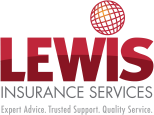2015 Fringe Benefits Tax – Be Prepared And Be Aware
The 31st of March 2015 marks the end of the 2015 Fringe Benefits Tax (FBT) year. If you are an employer that has provided any non-salary benefits to employees, you may have an obligation to prepare and lodge an FBT return with the Australian Taxation Office (ATO).
Types of fringes benefits which may be provided to employees are:
- Car fringe benefits
- Car parking fringe benefits
- Entertainment fringe benefits
- Expense payments fringe benefits
- Housing fringe benefits
- Living away from home allowance fringe benefits
- Property fringe benefits
- Board fringe benefits
- Debt waiver fringe benefits
- Loan fringe benefits
- Residual fringe benefits
The most common fringe benefits provided to employees are listed below, with additional information provided on each type of benefit.
Car Fringe Benefits
If you make a car you own or lease available for the private use of your employee, you may be providing a car fringe benefit.
A car is taken to be available for the private use of an employee on any day that they:
- use it for private purposes
- are allowed to use it for private purposes
If a car is garaged at or near your employee’s home, it is taken to be available for their private use. Similarly, where the place of employment and residence are the same, the car is taken to be available for the private use of the employee.
Generally, travel to and from work is considered private use of a vehicle.
Car Parking Fringe Benefits
A car parking fringe benefit may arise if an employer provides car parking to an employee and certain conditions are satisfied. Certain exemptions exist for small businesses where the car park is not provided in a commercial car parking station.
Entertainment Fringe Benefits
Entertainment may be provided to employees by supplying food, drink or recreation. This includes any accommodation or travel connected with the entertainment.
Examples of entertainment are:
- meals and drinks, cocktail parties and staff social functions
- sporting or theatrical events, sightseeing tours and holidays
- entertaining employees and non-employees (for example, clients) over a weekend at a tourist resort
The inclusion of various entertainment benefits when calculating the taxable value is dependent upon which method you choose. The two common methods used are the 50 / 50 split method and the actual method.
It is important to note that certain exclusions available under the actual method, such as the exemption for minor benefits of less than $300, will need to be included when using the 50 /50 split method. Accordingly, it can be worthwhile calculating your FBT liability for entertainment benefits under both methods to determine which method produces the best tax result.
Expense Payment Fringe Benefits
You may provide an expense payment fringe benefit if an employee incurs expenses and you do either of the following:
- reimburse them for the expenses
- pay a third party for the expenses
The expenses can be business or private expenses or a combination of both, but they need to be incurred by the employee.
Living Away From Home Allowance Fringe Benefits
A living-away-from-home allowance (LAFHA) fringe benefit may arise if you pay an allowance to your employee to cover additional expenses incurred, because they are temporarily required to live away from their normal place of residence to perform their employment duties.
Access to tax concessions for LAFHA fringe benefits will generally be limited to where:
- your employee maintains a separate home in Australia at which they usually reside
- your employee provides you with a declaration about living away from home
- the fringe benefit relates to the first 12-month period at a particular work location
Property Fringe Benefits
A property fringe benefit may arise when you provide your employee with property, either free or at a discount.
For FBT purposes, property includes:
- all goods, for example, items of clothing, or a television
- real property, for example, land and buildings
- other property, for example, shares or bonds
What You Need To Do
- Review benefits provided to employees during the year ending 31 March 2015. If you have provided a fringe benefit or you are unsure, we recommend you contact your accountant to discuss your obligations and to determine whether you will be required to lodge an FBT return with the ATO.
- For any car fringe benefits provided, obtain an odometer reading at 31 March 2015 for any vehicles used by employees for private purposes.
- You may be required to complete a signed declaration from your employees depending on the fringe benefits provided. The ATO approved FBT declarations can be found on the ATO website: https://www.ato.gov.au/Forms/Declarations/
Should you have any queries, or to find out more about your FBT obligations for your business, contact Katy Hanson, Director – Tax and Business Solutions – Vincents Chartered Accountants 07 3228 4000.
Author: Andrew Dyer – Vincents Chartered Accountants.
In making this referral, we do not advise on the products and services Vincents Chartered Accountants may provide to you, nor do we represent that Vincents Chartered Accountants products and services are right for you. You need to make your own decision based on the information Vincents Chartered Accountants provides.
